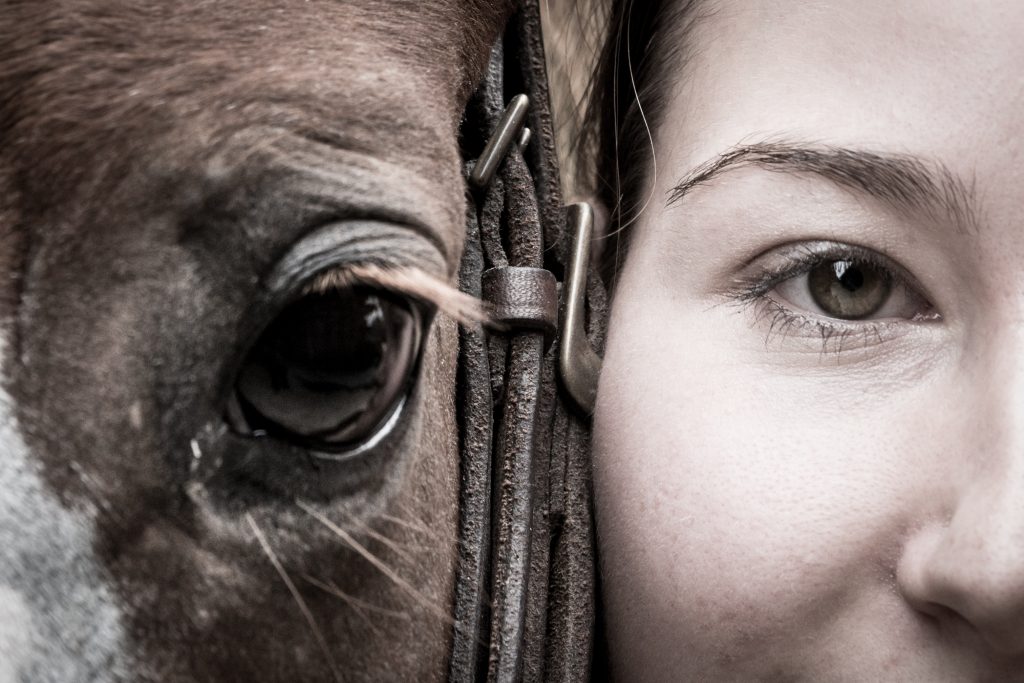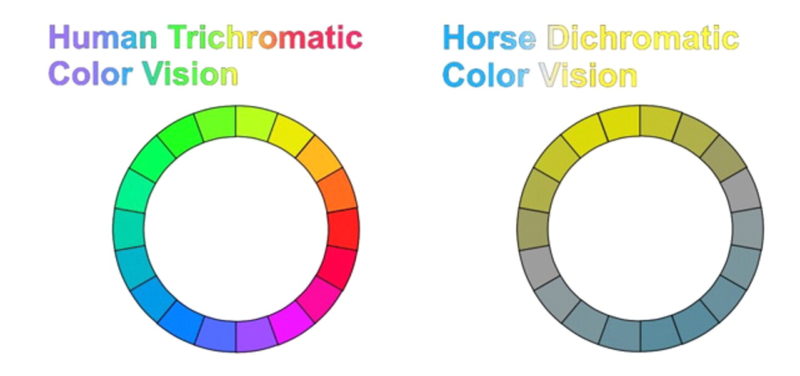Dr David Wood BVSc, MRCVS
Horses have the largest eyes of any land mammal but despite that their visual acuity at distance is quite poor compared to ours.
They have almost 360-degree vision due to their eye position on the side of the head but have blind spots directly in front and behind. From the type and distribution of the light sensitive cells, called rods and cones, in the retina at the back of the eye, researchers can determine which colours the horse can see and which they cannot.
The cones are used for colour vision and the rods operate mainly in low light conditions, providing monochromatic vision. That’s why “All cats look grey in the dark”.

Primates, including humans, have three distinct colour sensitive cone cell types providing so called trichromatic vision and can distinguish four basic colours, red, green, yellow, and blue.
Birds have four types plus some ability to distinguish the ultra -violet spectrum. Horses however are dichromatic with only two cone cell types and are unable to separately distinguish the colour red.
Horses will perceive red or orange objects as being a dull yellowish green. This is like some humans who are severely red/green colour blind and are mainly sensitive to the blue and yellow wavelengths of light. Along with colour, the ability to visually distinguish objects relies also on reflectivity, luminance or brightness and contrast from the background.
The difference between the human trichromatic and dichromatic vision is illustrated below with humans sensitive to far more colour variations than are horses.

There are implications to understanding how horses see the colours of the world in how we could apply those colours to their environment. We could enhance the visibility of objects by selecting colours which the horse is best able to distinguish from the background. For example, the principle could be applied to horse ramps, gateposts, electric fence wires and best of all, jumps.
Research undertaken by Sarah Catherine Paul and Martin Stevens examined the impact of different coloured markers on fences jumped by horses engaged in jump racing. They found that the use of fluorescent yellow, white, or bright blue markers would provide higher contrast than the traditional orange fence markers. The best contrast over different light and weather conditions was found to be with highly luminant white or blues making these best for the take off boards at the base of jumps.
Fluorescent yellow had the greatest overall contrast making it the best option for the mid rail fence markers. When these colours were used on test fences, the horses jumped differently than over the traditional orange marked fences, altering take-off and landing distance and jump angle profile. Clearly the ability to better see the obstacle affects how the horse jumps over it.
The pictures below taken with a special camera illustrate the different visual perception of such fences in horse and human.

Whilst the work involved jump racing horses it is reasonable to assume that other disciplines such as eventing and show jumping could benefit from these findings. The adoption of yellow, blue, and white fences and markers to improve visibility would likely improve safety for both horses and riders.
The advent of the Hi-Vis yellow top rail may not be far off.
Reference:
Paul & Stevens, Horse vision and obstacle visibility in horseracing. Applied Animal Behaviour Science Vol 222, January 2020, 104882

